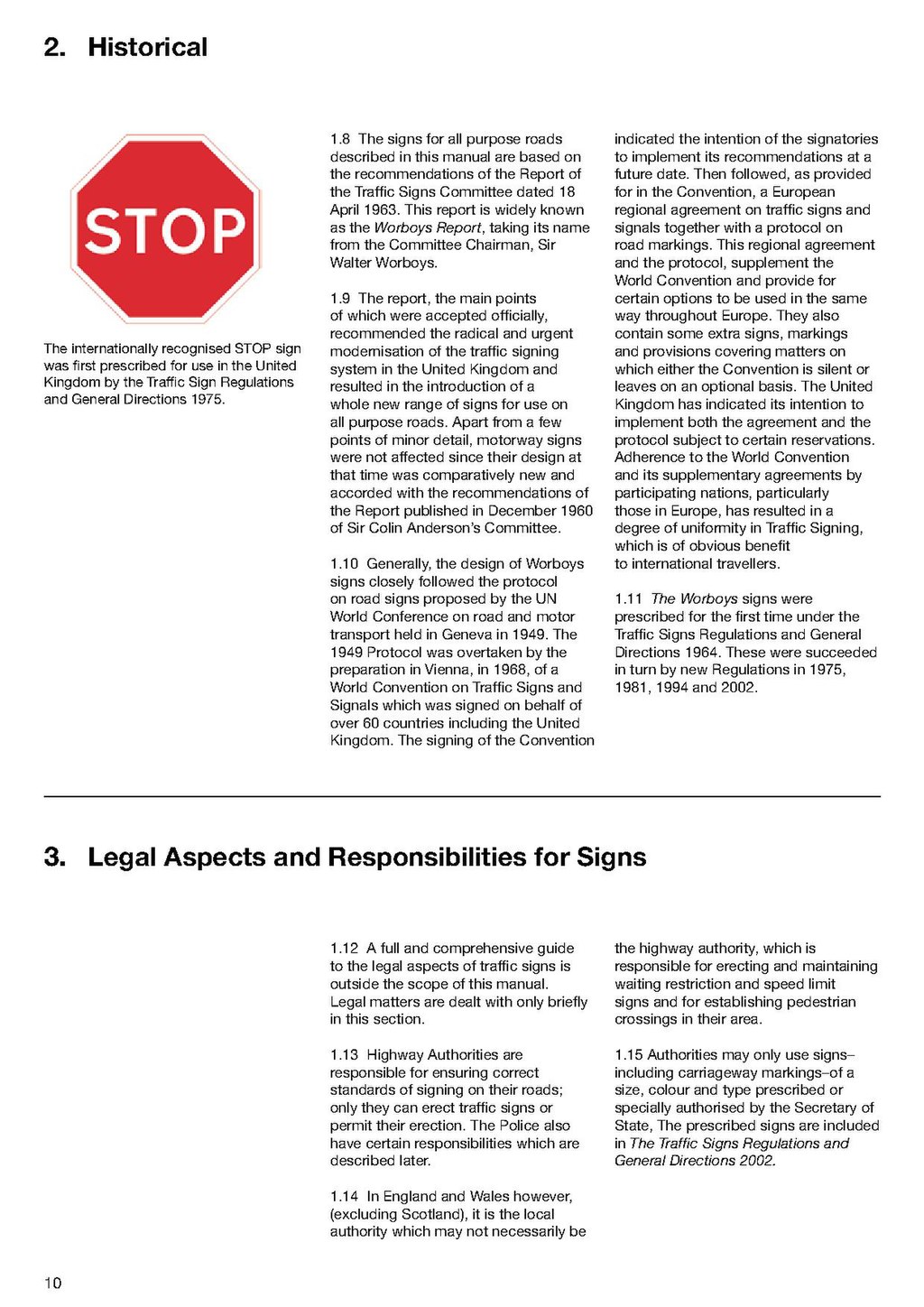2. Historical
| 1.8 The signs for all purpose roads described in this manual are based on the recommendations of the Report of the Traffic Signs Committee dated 18 April 1963. This report is widely known as the Worboys Report, taking its name from the Committee Chairman, Sir Walter Worboys.
1.9 The report, the main points of which were accepted officially, recommended the radical and urgent modernisation of the traffic signing system in the United Kingdom and resulted in the introduction of a whole new range of signs for use on all purpose roads. Apart from a few points of minor detail, motorway signs were not affected since their design at that time was comparatively new and accorded with the recommendations of the Report published in December 1960 of Sir Colin Anderson’s Committee. 1.10 Generally, the design of Worboys signs closely followed the protocol on road signs proposed by the UN World Conference on road and motor transport held in Geneva in 1949. The 1949 Protocol was overtaken by the preparation in Vienna, in 1968, of a World Convention on Traffic Signs and Signals which was signed on behalf of over 60 countries including the United Kingdom. The signing of the Convention indicated the intention of the signatories to implement its recommendations at a future date. Then followed, as provided for in the Convention, a European regional agreement on traffic signs and signals together with a protocol on road markings. This regional agreement and the protocol, supplement the World Convention and provide for certain options to be used in the same way throughout Europe. They also contain some extra signs, markings and provisions covering matters on which either the Convention is silent or leaves on an optional basis. The United Kingdom has indicated its intention to implement both the agreement and the protocol subject to certain reservations. Adherence to the World Convention and its supplementary agreements by participating nations, particularly those in Europe, has resulted in a degree of uniformity in Traffic Signing, which is of obvious benefit to international travellers. 1.11 The Worboys signs were prescribed for the first time under the Traffic Signs Regulations and General Directions 1964. These were succeeded in turn by new Regulations in 1975, 1981, 1994 and 2002 [1]. |
3. Legal Aspects and Responsibilities for Signs
1.12 A full and comprehensive guide to the legal aspects of traffic signs is outside the scope of this manual. Legal matters are dealt with only briefly in this section.
1.13 Highway Authorities are responsible for ensuring correct standards of signing on their roads; only they can erect traffic signs or permit their erection. The Police also have certain responsibilities which are described later.
1.14 In England and Wales however, (excluding Scotland), it is the local authority which may not necessarily be the highway authority, which is responsible for erecting and maintaining waiting restriction and speed limit signs and for establishing pedestrian crossings in their area.
1.15 Authorities may only use signs—including carriageway markings—of a size, colour and type prescribed or specially authorised by the Secretary of State, The prescribed signs are included in The Traffic Signs Regulations and General Directions 2002.
- ↑ and 2016 (Wikisource contributor note)

